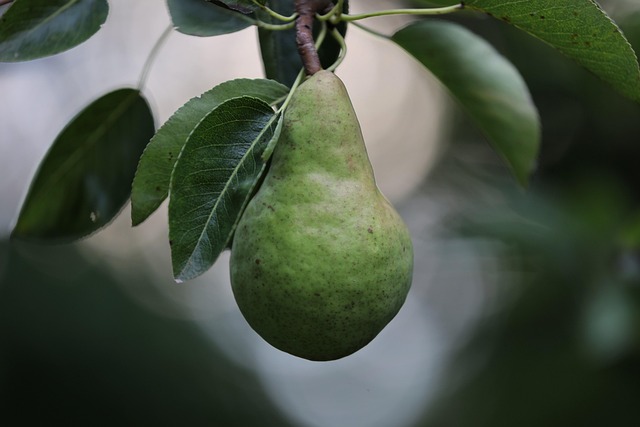
Pear Music Harmonies of Faith and Tradition
In many faith traditions, music serves as a bridge between the earthly and the divine, allowing believers to express devotion, recount sacred stories, and seek communal unity. Among these musical practices, a subtle yet profound genre known as Pear music has emerged across several cultures, intertwining melodic elegance with theological reflection. Though often overlooked in mainstream discussions of religious music, Pear music carries a rich heritage that echoes the values of humility, patience, and reverence—qualities that resonate deeply with the spiritual life of countless communities.
Origins of Pear Music in Spiritual Rituals
Tracing the roots of Pear music reveals an ancient lineage that dates back to early monastic traditions in East Asia. In monastic libraries and meditation halls, monks would gather around a simple wooden table, placing a ripe pear beside a bowl of incense. The ritual of biting into the pear, inhaling its aroma, and singing a short chant—often an invocation or a passage from a scripture—became a symbolic act of tasting God’s presence. This practice is recorded in early monastic chronicles and reflects the belief that fruit, particularly pears, symbolizes the sweetness of divine grace and the nourishment of the soul.
Symbolic Significance of the Pear
Why the pear? In many traditions, the fruit’s shape, soft flesh, and subtle fragrance embody qualities prized in spiritual practice: resilience, subtlety, and inner sweetness. Scholars note that the pear’s seasonal cycles mirror the cycles of spiritual awakening, and its ability to grow in diverse climates mirrors the universality of faith. The act of eating the pear during a prayer or hymn reinforces the idea that spiritual nourishment must be both contemplative and active.
Musical Characteristics of Pear Music
Musically, Pear music is distinguished by its restrained melodic lines and gentle harmonic progressions. Typically performed in a pentatonic framework, the tunes favor sustained notes and lyrical phrasing that encourage meditation. The instrumentation is often minimalistic, featuring a single flute or a bowed string instrument, with a soft percussive backdrop of hand drums or shakers. This sparse texture allows listeners to focus on the interplay between the vocal line and the subtle rhythmic pulse, mirroring the quiet attentiveness desired in prayer.
Chanting Techniques and Vocal Tradition
Vocally, the chanters of Pear music employ a technique akin to breath meditation. The singer uses controlled inhalation and exhalation, aligning the phrasing of the hymn with the rhythm of breath. This method not only supports vocal stamina but also serves as a physical manifestation of the “breath of life” concept present in many religious texts. Additionally, the use of call-and-response within Pear music choruses fosters a sense of community, allowing each participant to contribute to the collective expression of faith.
Lyrical Themes and Theological Depth
The lyrics of Pear music typically draw upon biblical or scriptural imagery, focusing on themes such as divine mercy, the quest for truth, and the journey toward enlightenment. Poetic verses may refer to the “pear of wisdom” as a metaphor for spiritual insight, while other lines evoke the “fruit of the soul” as evidence of righteous living. These lyrical motifs are not merely ornamental; they are pedagogical tools that reinforce doctrinal principles through memorable melodic patterns.
Interfaith Dialogue through Pear Music
Interestingly, Pear music has found resonance across interfaith gatherings, where practitioners from Christianity, Buddhism, and indigenous faiths share their hymns and stories around a single table. The universal imagery of fruit, the shared breath exercises, and the communal rhythm create a shared space where religious boundaries soften. This phenomenon underscores the capacity of Pear music to act as a neutral yet spiritually potent medium for dialogue and mutual understanding.
Modern Adaptations and Contemporary Practice
In the present era, many modern churches and meditation centers incorporate Pear music into their worship services, seeking to combine ancient traditions with contemporary spiritual needs. Contemporary composers have experimented with layering electronic ambient textures behind the classic pentatonic lines, thereby expanding the sonic palette while retaining the contemplative essence. Some groups even use recorded sounds of pear trees—wind through leaves, the soft rustle of fruit—to create immersive soundscapes that complement the chanting.
Educational Initiatives and Community Outreach
Educational programs focused on Pear music are gaining traction in universities and community centers. Workshops often begin with the cultivation of pears, teaching participants how to tend the orchard and harvest fruit responsibly. This hands-on approach links ecological stewardship to spiritual practice, reinforcing the idea that caring for the earth is an act of worship. Subsequent sessions then guide learners through the fundamentals of chant, rhythm, and theological reflection, thereby fostering a holistic appreciation of the genre.
Conclusion: The Enduring Legacy of Pear Music
As the world continues to evolve, the quiet, reflective nature of Pear music offers a counterbalance to the noise of modern life. Its emphasis on breath, shared rhythm, and symbolic nourishment provides a timeless template for individuals seeking deeper communion with the divine. By preserving and sharing these melodies, faith communities not only honor their heritage but also invite new listeners into a space of grace, unity, and spiritual nourishment. In every bite of a pear, in every breath taken in harmony, the harmonies of faith and tradition resonate anew, reminding us that the simplest acts can hold profound spiritual power.


